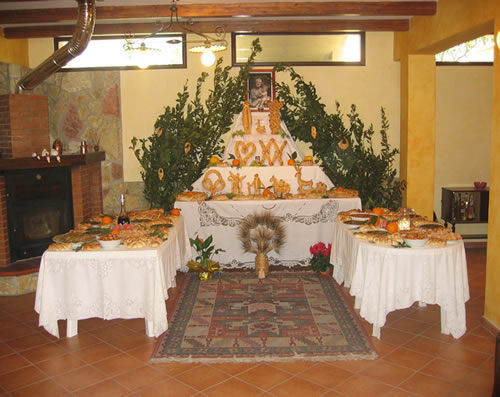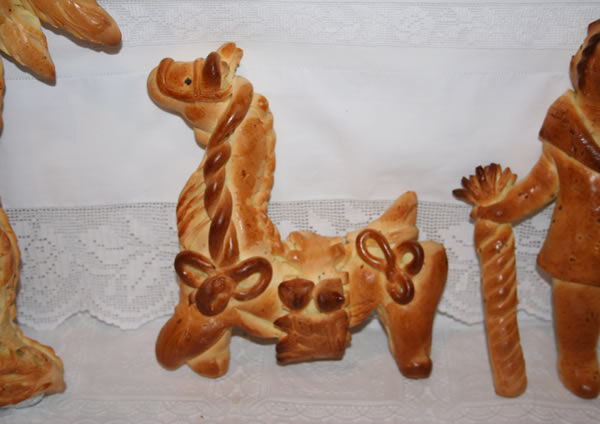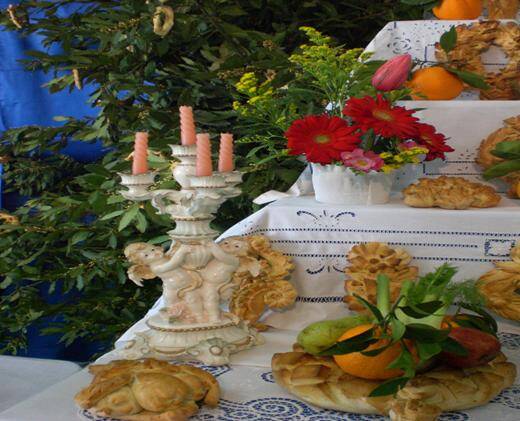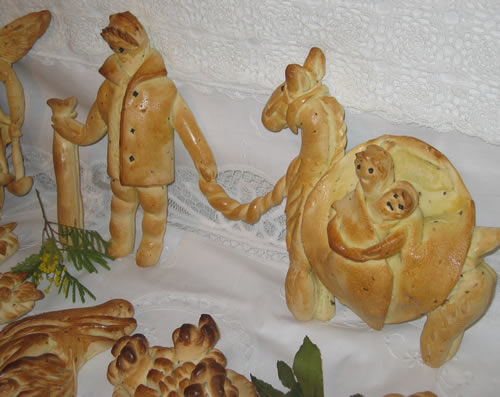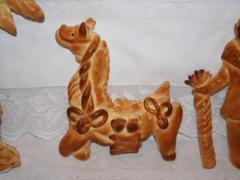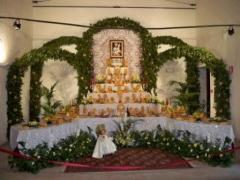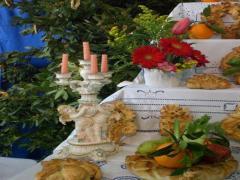Votive Bread of St. Joseph - Chiusa Sclafani
Description
Votive Bread of St. Joseph - Chiusa Sclafani
Property included in the Register of Intangible Heritage of Sicily (REIS)
----------------
Technical sheet prepared by: Region of Sicily - Department of cultural heritage and Sicilian identity - CRicd: Regional center for inventory, cataloging and documentation and Sicilian regional film library
N. Prog. 111
Good: Votive Bread of St. Joseph
Book: REI - Book of celebrations
Approval date: 28-04-2008
Category: Votive bread
Province: Palermo
Municipality: Chiusa Sclafani
Local denomination: U pani re San Giuseppi
Chronological News
The date of the festival is uncertain as, in 1972, the archive that preserved the book heritage and part of the registers of the minutes of the festive committee was destroyed. In any case, it seems that the beginning is very likely linked to the appearance of the holiday in the Roman universal liturgical calendar dating back to the early 1600s.
Recurrence: Annual
Date: March 19
Occasion: Celebration of the feast of St. Joseph
Function: Celebratory
Actors: The women of the country who cast the ballot
Participants: Local community
Description
The Altars are set up in the premises of the former Benedictine Monastery Badia a Chiusa Sclafani and in the homes of many families.
One of the most demanding and difficult tasks of the preparation of the altars consists in the realization of the votive loaves, a job carried out almost exclusively by women. The ingredients are: durum wheat flour, enough salt, water, home yeast, tip seed and beaten egg yolk. The dough must contain little water and must be hard to favor the modeling of the loaves. Characteristic of votive bread is that it is kneaded together with sesame; with it, shapes of little horses, birds, plates full of fruit, sacred objects, cucciddati are modeled in an artistic way.
It is usual in Chiusa Sclafani to summon the most skilled women to the bakeries of the neighborhoods, who also make use of the water with which they moisten their fingers and through which they glue the small forms of decoration to the loaves, obtaining as a result real works of art. 'art. Before being baked, the bread is brushed with egg white and removed from the oven only when it has reached a golden color. Loaves that present artistic difficulties, to prevent them from breaking, such as the name of Maria, Varva and vastuni di San Giuseppi, a Sfera etc., are placed and baked in trays, while all the others are placed directly in the oven.
Bread constitutes the centrality of the feast: as a vital substance, a symbol of light and earthly life. The next day, the blessed loaves are given to neighbors, friends and relatives. The most artistic, troubled (worked) bread, the "stick" of St. Joseph, the "heart" and the "name" of Mary, etc., are given to the most intimate people. No waste is allowed.
Footnotes
Linked to the myth of Ceres, the votive altar with bread is repeated every year on the occasion of the return of the goddess to earth for six months. This awakening of nature was called "Spring" and, with the advent of Christianity, the votive altar was dedicated to St. Joseph. For the occasion, some families, either by vote or by grace received, prepare bread to offer it to the poor. The dedication of the altar went to St. Joseph whose stick was the only one to "flourish", a sign of purity among Mary's suitors, an event that chose him as the husband of the mother of Jesus and guardian of the Holy Family.
Author Profile: Laura Mattaliano
Go to Google Maps
Send a notice to the publisher
[contact-form-7 id="18385"]

